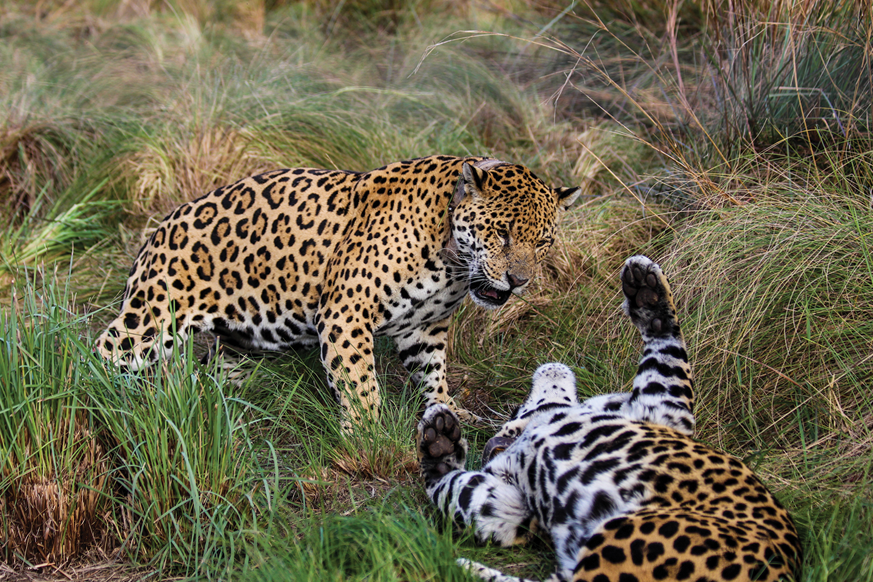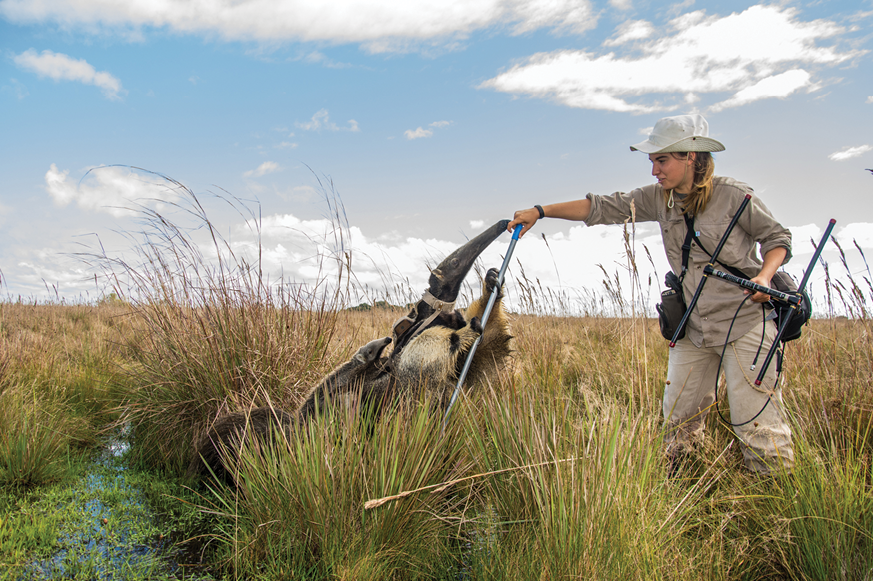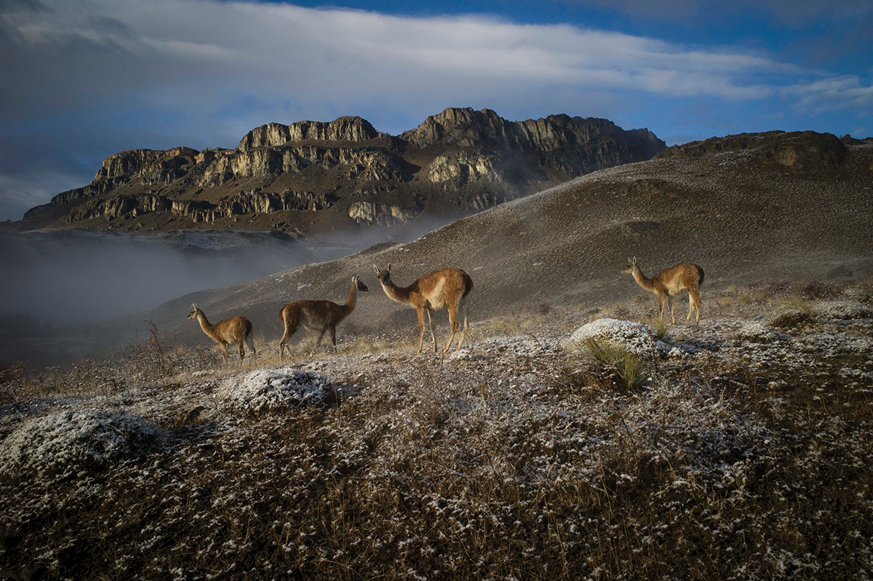- Home
- Media Kit
- Current Issue
- Past Issues
- Ad Specs-Submission
- Ad Print Settings
- Reprints (PDF)
- Photo Specifications (PDF)
- Contact Us

![]()
ONLINE

A Constant State of Evolution
Editors’ Note
Kristine McDivitt Tompkins, former CEO of the Patagonia clothing company, is the Cofounder and President of Tompkins Conservation. Alongside her late husband, Douglas Tompkins, she helped establish 13 national parks in Chile and Argentina, conserving 14.5 million acres. Tompkins Conservation has also worked to advance ideas in restorative agriculture and create economic opportunities related to nature-based tourism. She serves in various positions of global leadership in conservation, including as Chair of National Geographic Society’s Last Wild Places campaign. She received the Carnegie Medal of Philanthropy in 2017 and serves as the UN Environment Patron of Protected Areas.
Organization Brief
Activists, advocates, biologists and builders, the people of Tompkins Conservation (tompkinsconservation.org), founded by Kristine and the late Douglas Tompkins (1943–2015), are working to confront the twin crises facing life on Earth: climate chaos and collapsing ecosystems. More than a quarter century ago, Tompkins Conservation committed itself to working on the ground in the Southern Cone of South America. From northern Argentina to southern Chile, the organization is creating landscape-scale conservation projects that focus on restoring an area’s full complement of native species.

Jaguars getting to know each other before mating at the
Jaguar Reproduction Center on San Alonso Island in the
Ibera Wetlands. So far, two cubs have been born at the Center.
They will be released in 2021 along with other rescued jaguars
to form a foundational population for this top predator, extinct in
the wetlands for 70 years, and eventually play a role in the
region’s emerging economy of nature-based tourism.
Where did your interest in conservation develop and will you discuss the key areas of focus for Tompkins Conservation?
It’s hard to pinpoint those shifts in your life that aren’t especially noteworthy at the time but were tectonic and changed the direction of your life. Certainly, working with Yvon and Malinda Chouinard as we began the company Patagonia in the early 1970s was central to my understanding that all was not well in the natural world. Our family was raised on our great-grandfather’s ranch so that lifestyle also led us outdoors and I’ve stayed outdoors, in a manner of speaking, ever since.
Everything we do at Tompkins Conservation is based in the central belief that all life has intrinsic value. Everything we undertake is done to fight the onslaught of the industrial economy and culture that has disconnected itself from the hard and cold facts that without healthy ecosystems, there will be no future for humans and the natural world.
How do you describe your leadership style and what do you see as the keys to effective leadership?
My nickname during my tenure as CEO of the Patagonia company was the Benevolent Dictator. I am very inclusive as a leader but rather relentless when it comes to results and accomplishing difficult goals. My interest was as much in the art of putting teams together as it was with what we were producing and selling. I’ve carried these same characteristics as a leader directly into our conservation work for the last 27 years.

Reintroduction specialist Marianela Masat works with a
giant anteater with pup released in the reintroduction program
in the Ibera wetlands. The giant anteater, threatened by hunting,
dog attacks and habitat loss, was the first species reintroduced
to the wetlands. She wears a radio collar that tracks her location.
How critical are metrics to track the impact of Tompkins Conservation’s work?
Essential. We at Tompkins Conservation are keenly conscious of the ecological clock ticking loudly in our heads. The climate crisis, episodes like COVID-19 and the extinction crisis are breathing down our necks evermore stridently. Every acre saved and every species reintroduced or protected is the measure we go by in tracking our impact.
How do you define resilience and what are the key characteristics of a resilient organization?
There can be no resilience in any system in the absence of flexibility in the system. At Tompkins Conservation, we believe that we live in a constant state of evolution, of change. As an organization, as an ecosystem, resilience resides at the center of surviving an ever-changing world and sets of circumstances. This is also reflected in how we design conservation territories. With climate change factors shifting quickly now, we are not looking at a single area for conservation, we’re looking at how the system will likely function 100-200 years from now – protecting areas to enable healthy ecosystems long term.
Will you discuss your thoughts on the role of biodiversity and its links to public health?
Throughout human history we’ve had a buffer zone from deadly diseases like COVID-19 – extensive tracts of undisturbed nature. By razing forests and destroying other natural habitats and by replacing native species with domestic and invasive species, we have displaced these pathogens from their natural hosts and created a shortcut for them into human populations. Each of us, directly or indirectly, has experienced the havoc unleashed on society by the wholesale destruction of nature.
If there was ever a moment to awaken to the reality that everything is connected, it is now. The course of every individual human life may be affected by the actions of others around the globe. The fate of humanity collectively is tied, inextricably, to the health of nature, encompassing all the other creatures who share the planet with us. We have a common destiny – to flourish, or to suffer – together. We often think of public health as a social construct and, of course, the question of the access of public health services is major. If there is an inherent absence of a healthy ecosystem – the access to clear air, clean water – no amount of health services will ever conquer the real depth of the public health issue.

Guanacos at sunrise in Patagonia National Park, created with
the donation of land by Tompkins Conservation in 2018.
This native camelid used to roam the Patagonian steppe in
great numbers. While its population has been largely
reduced and displaced by ranching, the Chacabuco Valley
in the National Park is home to thousands.
Do you feel that resilience is something a person is born with or can it be taught?
I believe we’re born with certain personality traits that may encourage strength and resilience but there are millions of examples in war, in times of strife, that build the fibers of resilience within us. Military recruits are trained to develop a certain kind of strength to withstand adversity, but resilience in the truest sense of the word comes from something deeper.
What do you see as the responsibility of leading organizations to be purpose-driven and to give back to their communities?
The greatest failure of both public companies and the private sector is their general unwillingness to behave ethically, using their strengths toward human dignity and health for all life. Of course, there are shining examples of companies who stretch the definition of generosity, leadership and commitment to excellence, but the vast majority fail in a number of critical ways. Think about the industrial globalized economy and its impact on virtually every section of civilization worldwide. Sovereign states are beholden to corporate necessities while the health of ecosystems are measured only in their ability to supply high levels of production. I come from the business world and I’m very clear that the single most dangerous threat to our future is born out of this unstoppable train.
What advice do you offer to young people beginning their careers during this uncertain time?
For many years I spoke at leading business schools in the United States – Wharton, Stanford and others. At the end of every session, someone in the class would ask me what I would do if I were them and I always said the same thing. When I was young, just starting out in business, we didn’t know what we know today – we didn’t know that ecological systems were central to the well-being of all life. It was easier then. Your problem now is that you do know what’s going on. Once you know something, you cannot turn your back to it – this is the challenge for young people today. If you make the wrong decisions about what to do with your life, you do so knowingly and this forces you to take long hard looks at yourself in the mirror. At this particular moment, the extenuating circumstance is so extreme that we must all do whatever is required to take care of ourselves in terms of daily life, but also use this time to think deeply about what is happening to us and, more importantly, why it is happening. We will do no good for ourselves or anyone else if we do not have the presence of mind to think deeply about the pandemic, our deep social unrest, the onslaught of our changing climate and the extinction crisis. We are far past the time when sitting on the sidelines is an option.![]()